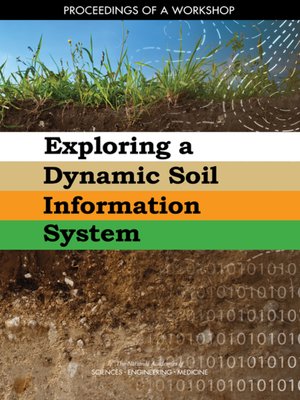Exploring a Dynamic Soil Information System
ebook ∣ Proceedings of a Workshop
By National Academies of Sciences, Engineering, and Medicine

Sign up to save your library
With an OverDrive account, you can save your favorite libraries for at-a-glance information about availability. Find out more about OverDrive accounts.
Find this title in Libby, the library reading app by OverDrive.



Search for a digital library with this title
Title found at these libraries:
| Library Name | Distance |
|---|---|
| Loading... |
As a living substrate, soil is critical to the function of Earth's geophysical and chemical properties. Soil also plays a major role in several human activities, including farming, forestry, and environmental remediation. Optimizing those activities requires a clear understanding of different soils, their function, their composition and structure, and how they change over time and from place to place. Although the importance of soil to Earth's biogeochemical cycles and to human activities is recognized, the current systems in place for monitoring soil properties - including physical, chemical, and, biological characteristics - along with measures of soil loss through erosion, do not provide an accurate picture of changes in the soil resource over time. Such an understanding can only be developed by collecting comprehensive data about soils and the various factors that influence them in a way that can be updated regularly and made available to researchers and others who wish to understand soils and make decisions based on those data.
The National Academies of Sciences, Engineering, and Medicine convened key stakeholders in a workshop on March 2-4, 2021, to discuss the development of a dynamic soil information system. Workshop discussions explored possiblities to dynamically and accurately monitor soil resources nationally with the mutually supporting goals of (1) achieving a better understanding of causal influences on observed changes in soil and interactions of soil cycling of nutrients and gases with earth processes, and (2) providing accessible, useful, and actionable information to land managers and others. This publication summarizes the presentation and discussion of the workshop.







